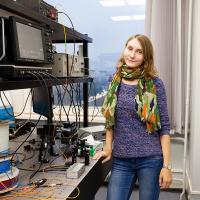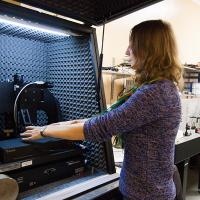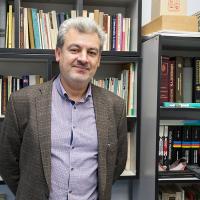From 20 to 22 October the Intellectual center of Lomonosov Moscow State University has held the final scientific and practical conference of the engineering contest “Engineering education in Russia: status and strategic perspectives – view of the youth”.
As a part of this national project there were round tables on topical scientific issues and development prospects of engineering and scientific fields: “Young scientists and engineers in the implementation of megaprojects of Russia's development”, “Strategy of Russian science and perspective cooperation directions of science and production: engineering approach”, “Training of engineers: strategic youth vision”.
Tatiana Kazieva, a postgraduate student of the MEPhI Department of Laser Physics, has won the contest of individual research projects, presenting a unique invention – three-axis heterodyne laser interferometer, designed for absolute measurements of displacements of the system of object positioning or piezo-resonance sensitive elements of probe, atomic force, scanning electron microscopes with sub-nanometer accuracy.
According to Tatiana’s scientific supervisor, Doctor of Physical and Mathematical Sciences Kuznetsov Andrey Petrovich, who is the Head of the MEPhI Laboratory of Laser Diagnostics, work on creation of laser interferometers and its application in nanometrology had been conducted at the Department for several years. In recent years this field of science has become incredibly topical since development of modern technologies requires continuous improvement of measuring and controlling devices.
For example, in addition to monitoring of manufacturing processes of components for the microelectronics, interferometer can be used to estimate properties of new materials and alloys. High measuring accuracy (similar devices in the USA and Germany have 10 times less accuracy than the analog of MEPhI!) allows to record the smallest changes in the geometry of the diamond tip of nanohardness tester.
It is no wonder that a unique interferometer, developed at the Department of Laser Physics, has generated considerable interest among the world scientific community as a device, which doesn’t have analogues. Similar measuring devices, which are in laboratories in USA, Japan or Germany, are nontransportable massive installations with a special system of vacuum pumping. It is not possible to use them every time, and the process of data collection takes much more time.








